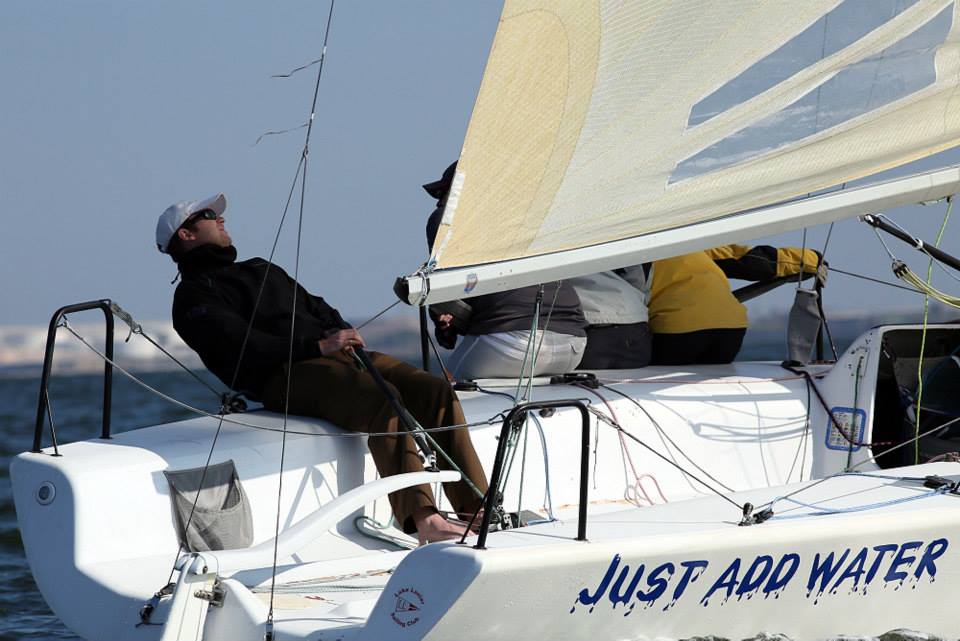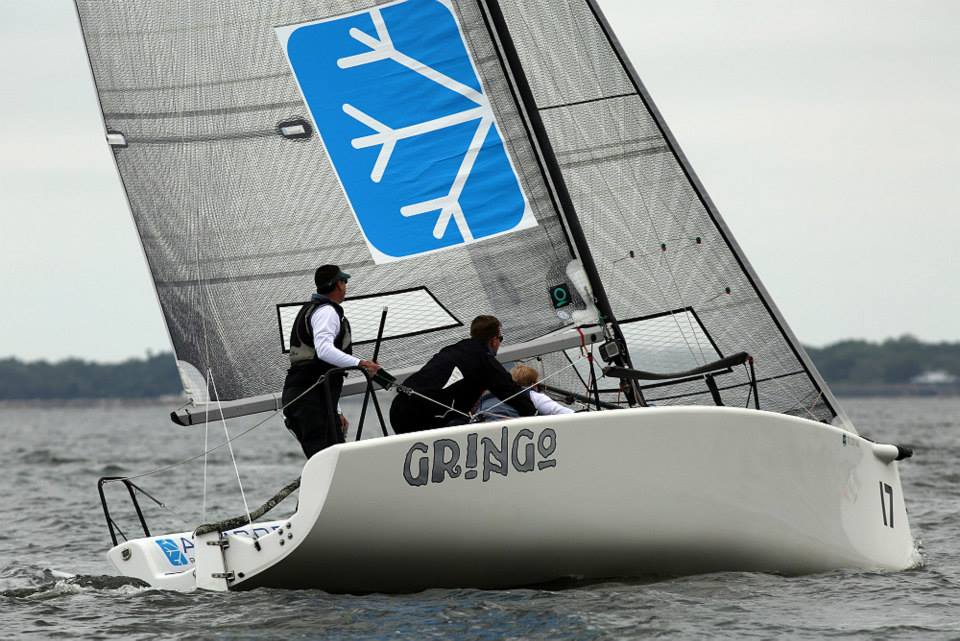Pro/Am Progress by Sam Rogers
Where do you find that line between keeping top level pros in a fleet to provide that ultimate challenge, and keeping the average racer happy and engaged? It certainly depends on the fleet you’re talking about, but there’s no question that for an open class like the #Melges24, the amateur owners and crews are absolutely vital to maintaining a successful fleet – and the overall sport.
We’ve all seen it happen, over and over again: A Class/regatta, or area (or judging from sailing’s decline since 1979, the entire country of America) judges the temperature of its customers poorly, and that line between ‘let’s go swap a little gelcoat with great sailors and earn their respect’ and ‘holy crap, I’ll never, ever have the time/money/desire to keep going in this sport’ disappears. The issue is not simply about well-written and conceived rules, though they help; it’s more about the kind of perception and atmosphere created by the folks running the show. No Class has more epitomized this struggle than the Melges 24; despite a feverish period in the 2000s when the M24 saw 100+ boat turnouts for the majors and big regional fleets, the NorthAm fleet went into rapid decline beginning about 2009. Escalating costs, difficulty in finding good crew who could hike as long and hard as the pros who absolutely filled the fleet, and distracted marketing from the builder were the culprits, and half a decade later, the Class is seeing a serious resurgence in the boat we’ve always considered to be the world’s most perfect one-design race boat. Long time Melges performer and now pro crew Sam Rogers explains why. Joy Dunigan photos with a sweet gallery over here. World Champ Brian Porter beat Bora Gulari on the final day in a replay of something we feel like we’ve seen at about 10 of these Nationals. Full reports here.
Where do you find that line between keeping top level pros in a fleet to provide that ultimate challenge, and keeping the average racer happy and engaged? It certainly depends on the fleet you’re talking about, but there’s no question that for an open class like the Melges 24, the amateur owners and crews are absolutely vital to maintaining a successful fleet – and the overall sport. Most amateurs want the challenge of sailing with and against the very best, but without the average man/woman making it to the race course, those lines are awfully lonely places.
I’m writing today just after an awesome 31-boat Nationals at Davis Island, FL, to let you know that the US Melges 24 Class seems to have made it through its ‘re-birth’ while really nailing this balance, and without losing its high-performance, grand prix identity. Nearly a perfect split between open and amateur teams swapping blows over 3 days and 8 races with both overall and Corinthian standings going down to the wire and several all-amateur teams filling out the top ten. Kevin Nixon’s Accru+ entry from Australia took the overall Corinthian trophy and 7th overall, competing with his wife, daughter, son and son’s girlfriend. Sounds like a perfect weekend getaway to us!

Roger Counihan’s Just Add Water team (Lake Lanier, GA) is a Melges 24 staple, and he finished a solid 3rd Corinthian and 11th overall. Roger thinks the fleet’s new look is awesome: “The Corinthians by themselves are a very strong fleet, and in every race there are Corinthian teams sticking it to the pros. There’s nothing better than seeing an America’s Cup sailor or World Champion behind you – those are always great stories for the bar. At the same time, its great to see what the pros are doing – how are they trimming their jib, where is their traveler, how hard are they soaking. Plus, as a fan of sailing, watching strong teams full of sailmakers, Olympians, and boat builders go head to head in the same boat we sail is pretty cool.”
Part of the Class’s rebirth is thanks to the early success of the M24, and the big used-boat market that developed as the economy collapsed. Enterprising sailors in a few unexpected regions scooped up good boats for great prices, the grassroots growth results are now filtering into the traveling/major regatta fleets. “There are still new sailors picking up competitive starter boats for surprisingly low prices and quickly learning to mix it up,” said Counihan. ”Our fleet is a tight knit bunch of friends who have sailed on everyone else’s boats, help everyone get better, and hang out off the race course.”

Texas & Gulf Coast District rep Ryan Glaze (Gringo) says it’s important to represent his regional fleet on the national stage. ”Our performance this past week at (2nd Corinthian, 8th overall) was important to our team, the Gulf Coast District, and to the USMCA. We proved that you can get an older boat, put used sails on it, and be competitive with a good team of amateurs. There are a lot of good sailors out there that would like to race the M24 but might be turned away by the costs. However, over the past couple of years, we have seen more teams in our district take a similar approach to ours; purchasing an older used boat, giving it a little TLC, and putting together a core group as your team.”
Through the ebb and flow of fleet growth in the 20 year history of the Melges 24 class and a stronger than usual used boat market, attracting a balanced mix of amateur and pro teams seems to have reach an equilibrium, and the spirit of the class has been renewed. Along with the solid turnout the Nationals, there was a strong sense of community with every sailor leaving with something. With a well attended class debrief led by some of the classes best-regarded pro and amateur helms (Porter, Gulari, Kullman, Madrigali), and an owners’ meeting that highlighted the recent growth in the class and previewed a solid 2015/16 schedule (featuring the 2015 Nationals at the awesome Gorge in late August and the 2016 worlds being narrowed down to a location in South Florida) the Melges 24 may be blazing a new trail as a model for successful One-Design fleet growth, just as it did over 20 years ago.
And it’s still quite a bit faster than all the 20-something production sporties that have come since…
Photos by JOY - USMCA
